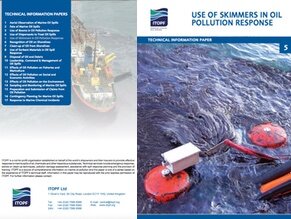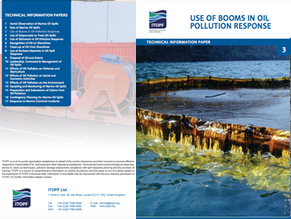Documents & Guides
Explore a variety of topics about marine spills, response and compensation matters in the pages below.
Each topic and area of interest provides access to more detailed documentation that is freely downloadable.
This includes our 18 Technical Information Papers which are fully illustrated with photos and diagrams and are available in several languages.
Alternative Fuels
What are the emerging alternative fuels and their associated risks, hazards, damages and liabilities?
Compensation for Ship-source Marine Oil Spills
What legal arrangements and sources of compensation are available for a spill from a ship?
Disposal
What planning and waste management systems need to be put in place to reduce the volume of oily waste for treatment or disposal?
HNS
What are the specific chemical response strategies for responding to a Hazardous and Noxious Substance spill, and what are the potential effects on human and marine life?
Contingency & Response Planning
What information is needed for an effective oil spill contingency plan? How can aerial observation and protective strategies assist with response operations?
Economic Effects
Which industries might suffer temporary economic losses and loss of market confidence?
Fate of Oil Spills
What happens to oil in the marine environment over time when spilled at sea? How do different factors such as volume and physical and chemical properties affect the fate of oil spills?
Explore the Resources
Containment & Recovery of Oil Spills at Sea. Methods and limitations (1995)
The ultimate aim of any oil recovery operation at sea is to collect as much floating oil as is reasonably and economically possible. However, a review of past spills shows that rarely is more than 10% of spilled oil recovered from the sea surface. Although many methods of mechanical containment and recovery exist, each has its own limitations which affect the overall success of a recovery operation.
Categories: Containment & Recovery, Papers
TIP 05: Use of skimmers in oil pollution response
This paper describes the fundamental requirements for the successful use of skimmers in the situations most likely to be encountered during an oil spill and should be read in conjunction with other ITOPF papers in this series, in particular, on the use of booms, shoreline clean-up techniques and the disposal of oil.
Categories: Response Techniques, Containment & Recovery, Planning & operations, Technical Information Paper (TIPS)
TIP 03: Use of booms in oil pollution response
This paper describes the principles of boom design and the two main modes of operation, namely towing by vessels at sea and mooring in shallow or inshore waters.
Categories: Response Techniques, Containment & Recovery, Planning & operations, Technical Information Paper (TIPS)



